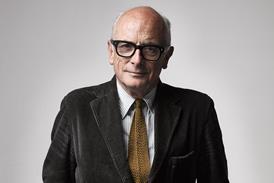- Home
 Green light for DLA’s £425m scheme to build nearly 1,500 homes in Woolwich
Green light for DLA’s £425m scheme to build nearly 1,500 homes in Woolwich University of Cambridge converts Part 2 degree apprenticeship into regular part time course
University of Cambridge converts Part 2 degree apprenticeship into regular part time course Peter Murray launches bid to run for London mayor in 2028
Peter Murray launches bid to run for London mayor in 2028 What made this project… The School of Science, Engineering + Environment (SEE) by Sheppard Robson
What made this project… The School of Science, Engineering + Environment (SEE) by Sheppard Robson
- Intelligence for Architects
- Subscribe
- Jobs
- Events

2025 events calendar Explore now 
Keep up to date
Find out more
- Programmes
- CPD
- More from navigation items
Chicks and Bricks
By Diana Yakeley2011-05-20T17:17:00

Source: Utiperisi
I have learned that, as a woman in this industry, I need to be “more like a man”
This is premium content.
Only logged in subscribers have access to it.
Login or SUBSCRIBE to view this story

Existing subscriber? LOGIN
A subscription to Building Design will provide:
- Unlimited architecture news from around the UK
- Reviews of the latest buildings from all corners of the world
- Full access to all our online archives
- PLUS you will receive a digital copy of WA100 worth over £45.
Subscribe now for unlimited access.
Alternatively REGISTER for free access on selected stories and sign up for email alerts
- © Building Design 2023
- Terms and Conditions
- Cookie Policy
- Privacy Policy
- About BD
- Contact BD
- Advertise
Site powered by Webvision Cloud


